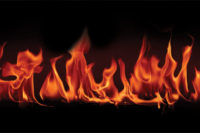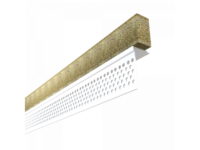There are certain buildings or remodeling jobs that might require a fire-rated door. These are often installed in office buildings, public buildings, and dormitories, and most of all, exit stairwells. Some residences may also require a fire-rated door but this is less common than commercial buildings. If you’re having doubts about whether you should install fire-rated access doors, then you should probably finish this article.
What Is a Fire-Rated Access Door?
A fire-rated access door is a very heavy door made of materials such as gypsum or metal and its primary purpose is to hold back smoke and contain the fire. It is called fire-rated because it means that when the door is installed properly, it is not supposed to combust during a certain period of time in an average fire.
Each fire-rated door must be installed following certain specifications and also requires specific door hardware and sealants to maintain the fire-rating. Whether working on new construction or renovation of an older property, it’s important to get access doors with the proper fire-rating for code compliance safety. The time ratings for fire-rated access doors vary and some standard ratings include 20-90 minute doors. Small companies or government agencies may determine fire ratings depending upon the area.
Why Does Fire-Rating Matter?
Access doors that are fire-rated are designed to withstand the heat from a fire for a certain amount of time before actually failing. Fire-resistance rating is the duration for which a passive fire protection system withstands a fire-resistance test. That gives time to either control and put out the fire or help the people get out of the building.
Access doors are usually used to conceal gas lines, HVAC, electrical wirings, and plumbing or anything that might be flammable. To protect these systems, access doors need to be fire-rated. Different ratings will indicate how well a door or assembly can withstand fire and they are dependent on factors such as the intensity of the fire and how the access door is mounted. Fire-rated access doors come both in outward and upward swinging and you can also determine if you want them to have an automatic or manual latch release.
Lastly, fire-rated access doors are also essential in making any building LEED-certified. This kind of certification is both economically and environmentally-friendly, as well as lowers energy costs.
What Are the Types of Fire-Rated Access Doors?
Fire-rated access doors are classified according to their fire-rating. Access doors can provide 20 minutes, 45 minutes, or even up to 180 minutes of protection. There are also doors that are called “temperature rise doors”. These doors try to limit heat transfer from one side of the door to the other door. They help prevent injury and provide an easier escape in fire situations. However, because the advent of automated sprinkler systems changed this and these doors are no longer necessary in commercial installations if the building has a sprinkler system with complete interior floor coverage.
Mounting Considerations
Another factor that affects fire-rating is how an access door is mounted. For example, a fire-rated access door that is good for 60 minutes mounted on flammable wooden studs could be good for three hours on a non-flammable enclosure. It takes more time and more cost but provides better safety and security in case of a severe fire event.
Latching Mechanisms for Fire Rated Access Doors
An active latch bolt that can withstand the pressure that fire can cause is also required for fire-rated access doors and other assemblies. Access doors can also have either automatic or manual latching mechanisms. Some businesses have a mix of doors with both automatic and manual latches.
Ensuring that your livelihood is protected from fire is not a joke. That’s why it is important to understand fire-rating, fire-rated access doors, and all other passive fire-resistance mechanisms.
Are you looking for fire-rated access doors with different fire ratings? Visit accessdoorsandpanels.com/fire-rated-access-doors/.








Report Abusive Comment